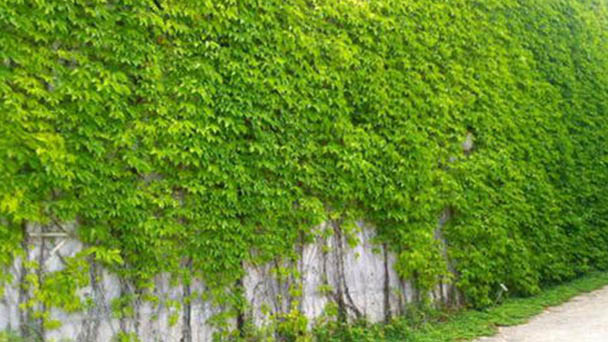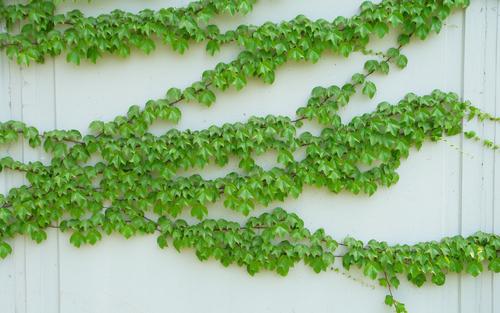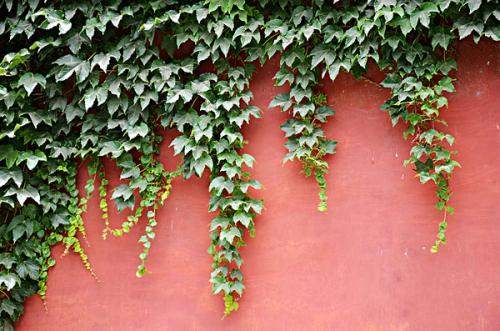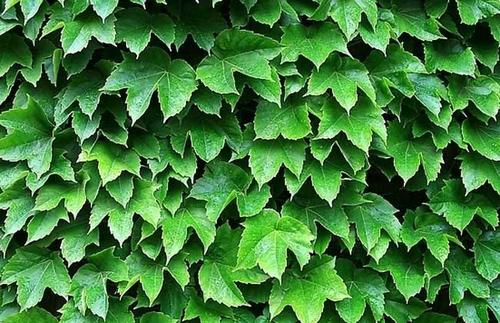Boston Ivy (Parthenocissus Tricuspidata) Profile
Written by admin
Jan 28 2023

Boston Ivy (Parthenocissus tricuspidata) is also known as grape ivy, and Japanese ivy, and also as Japanese creeper. Boston Ivy often climbs on wall rocks. The rhizome of Boston Ivy can be used as medicine to break blood stasis and detumulate poison. The fruit makes wine, but its roots secrete an acid that eats away at the limestone, and its roots drill down cracks in the walls, making them so large that the walls crumble and collapse.
Boston Ivy Picture

Boston Ivy Info
| Botanical Name | Parthenocissus tricuspidata |
| Common Names | Boston ivy, grape ivy, and Japanese ivy, and also as Japanese creeper |
| Plant Type | Perennial, deciduous, broadleaf vine |
| Light | Full sun, part shade |
| Native Areas | China and Japan |
| Mature Size | 30 to 50 feet |
| Flower color | Greenish white |
| USDA Zones | 4, 5, 6, 7, 8 |
Boston ivy Morphological Characteristics
Boston Ivy Vines
Boston Ivy is a large deciduous perennial woody vine similar in morphology to wild vines. The stem can be up to 18 meters (about 60 feet) long.
The epidermis has lenticels and the pith is white. Branches stout, old branches grayish brown, young branches purple red. There are tendrils on the branches, which are short and much branched. The top and tip of the tendrils have sticky suckers, which can adsorb to the objects they encounter, whether it is rocks, walls or trees.
Boston Ivy Flowers
Boston Ivy summer flowering, small flowers in clusters not visible, yellowish green or berry purple-black, opposite the leaves. The flowers are bisexual, monoecious, cymes often on short branches between leaves, 4 - 8 cm long, shorter than the petiole; Flowers are 5-merous; Calyx margin entire; Petals of Boston ivy is apically reflexed, ovary 2-loculed, each with 2 ovules.
Boston Ivy blooms in summer.
Boston Ivy Leaf
The leaves of Boston Ivy are alternate, leaflets are fleshy, base cuneate, very variable, margin coarsely serrate, leaf blade and veins are symmetrical. Leaves are broadly ovate on flowering branches, 8 -- 18 x 6 -- 16cm, often 3-lobed, or leaves divided into 3 leaflets on lower branches, base cordate. Leaves are green, glabrous, abaxially pinkish, back veins pubescent, bright red in autumn. Leaves smaller on young branches, often undivided.
Boston ivy Fruit
Boston Ivy's berry is small globose, bluish-black when ripe, pinkish and eaten by birds.
Boston Ivy is expected to fruIt 'in autumn.
Boston Ivy Ecology
Boston Ivy has strong adaptability. It likes wet and cloudy environments, but it is not afraid of strong light. Boston ivy can withstand cold, drought and barren.Resistant pruning, afraid of water, the soil requirements are not strict, wet environment or to the sun, can thrive, but in the wet, fertile soil growth. Boston Ivy has strong resistance to harmful gases such as sulfur dioxide and hydrogen chloride, and has the ability to absorb dust in the air.
Boston Ivy has an easy-going nature, with a small footprint, fast growth and large green coverage. The cane of 2 cm thick of a stem, plant two years, metope afforest covers a coverage, can amount to 30 ~ 50 square metre unexpectedly.
Boston Ivy Propagation
Boston Ivy can be propagated by sowing, cutting and layering methods.
Boston Ivy Seed Propagation
After the seeds rub off the skin and flesh, after washing and drying, Boston ivy can be placed in the wet sand for low temperature storage for a winter. Heat preservation and moisture preservation are conducive to promoting germination. In the early spring of the next year, the seeds can be planted on the ground in spring, covered with film.
Boston Ivy Cutting Propagation
Early spring cut Boston Ivy stems and tendrines 20 ~ 30cm, inserted into the open seedbed, irrigation, keep wet, soon can be smoked tendrines survive, can also be in summer and autumn with tender branches with leaf cuttings, shade watering maintenance, can also be quickly smoked new branches, cutting survival rate is high, widely used. Hard cuttings in 3 ~ 4 months, will be cut into 10 ~ 15 cm of hard cuttings inserted into the soil, pouring enough water, keep wet. Twinder cuttings take the current year of new branches, in the summer.
Boston Ivy Layering Propagation
Boston ivy can use the wave layering propagation method, in the rainy season cloudy and cloudless weather, high survival rate, can be separated and transplanted in autumn, the next year.

How to Grow and Care for Boston Ivy
Temperature
Boston ivy adaptability is very strong, during the growth of seedlings can be extensive management, and there is no need for cold protection in winter. Even in the northern winter, it won't freeze because it can tolerate temperatures of -20℃.
Light
Boston ivy degree light requirements are also low, whether in the shade, or in the sun, it can thrive.
Soil
It is best to plant Boston ivy in fertile soil, but it can also bear barren, but planted in fertile places, it will grow better.
Fertilization
When Boston ivy grows, there is a certain demand for nutrients. When planting, it is necessary to apply some basic fertilizer to it. When it grows in the later stage, it is necessary to fertilize 1-2 times a month. Boston ivy grows faster in soil that is rich in nutrients.
Pruning
Boston Ivy has the ability to resist pruning and can be pruned when its vines grow too tightly. Also can pruning according to its circumstance at ordinary times, the purpose is to admire and appreciate higher.
Boston ivy Disease & Pest Control
Disease Control
Boston Ivy's diseases include powdery mildew, leaf spot and anthrax.Common aphid hazards.
Boston ivy due to strong resistance, less plant diseases and insect pests, but also occur, especially in the rainy season, due to high temperature and high humidity are prone to powdery mildew, leaf spot and anthracnose, when diseases occur, available 50% carbendazim, thiophanate and chlorothalonil 500 ~ 800 times liquid, spray against every 7 days or so, can be 2 ~ 3 times in a row.
Pest Control
The insect pest of Boston ivy is mainly aphid, available okinprid, killing aphid net, or high performance cypermethrin 500 ~ 1000 times liquid control.
Boston ivy Varieties
World: 15 species; China: 10.
Southeast of Boston ivy (P.a ustro - orientalis)
Leaves small, 5.Cymes opposite leaves.
Mosaic Boston ivy (P.h enryana)
Young shoots with four edges.Young leaves green, abaxially white or purplish.Inflorescence paniculate.
3 leaf Boston ivy (P.h imalayana)
Leaves small, 3. Cymes.
Red Trifoliate Boston Ivy (P.Var. Rubrifolia)
Leaflets are smaller and wider, purplish when young.Cymes are smaller.
Five leaf Boston ivy (P.q uinquefolia)
Young branches terete.Leaves small, 5. Central America.
Powder leaves Boston ivy (P.t homsoni)
Young branches and young leaves are purplish, the abaxial leaf has white powder.
Boston Ivy Toxicity
The berries of Boston Ivy contain oxalates and are poisonous if eaten, whether by people or pets, although wild birds do eat the berries.2 Be sure to educate children not to eat these berries. The crystals will irritate the lips and tongue. Seek medical attention promptly. Some people also experience an allergic reaction to Boston ivy upon contact.
- Read More: Is Boston Ivy Poisonous
Boston Ivy Distribution
Boston Ivy climbed on rocks, trees, walls and mountains.
Boston Ivy is native to eastern Asia, the Himalayas and North America, and later introduced to other areas, including North Korea and Japan. China's Henan, Liaoning, Hebei, Shanxi, Shaanxi, Shandong, Jiangsu, Anhui, Zhejiang, Jiangxi, Hunan, Hubei, Guangxi, Guangdong, Sichuan, Guizhou, Yunnan, Fujian are distributed.
Boston Ivy Uses
Medicinal Value
The root and stem of Boston Ivy can be used as medicine, which has the effect of breaking blood, activating tendons to stop bleeding and reducing swelling and poison. The fruit can make wine.
Boston Ivy Landscaping Purposes
Boston Ivy has skin holes and thick branches and leaves in summer. It often climbs on walls or rocks, and is suitable for planting house walls, garden entrances and stone abutments at the end of Bridges. Boston ivy can be used for greening house walls, park rocks, can beautify the environment, but also cool down, adjust the air, reduce noise.
The dense stems and leaves of Boston Ivy cover the walls of the house, which can not only block the strong sunlight, but also reduce the indoor temperature due to the air flow between the leaves and the walls. Boston ivy acts as a barrier to reduce noise in the environment and to trap airborne dust. Boston Ivy's tendril-style suction cups also draw moisture from walls, helping to dry out a damp home; And in the dry season, Boston ivy can increase the humidity.
Boston Ivy is the preferred plant for vertical greening.Vertical greening, also known as climbing greening, is a greening method that uses climbing plants to grow on buildings or trellises. Boston Ivy is the most commonly used and ideal climbing plant. Boston ivy uses suckers to climb up walls. Planted for a long time, dense green leaves cover the building's exterior walls, just like wearing green clothes.In the spring, Boston Ivy grew green and green.In summer, yellow-green flowers; In autumn, Boston Ivy's leaves turn orange; This gives the building a variety of colors. In addition to Boston Ivy, morning glory, wisteria, etc. can also be used for vertical greening.

Latest Updated
- Benefits of Bugleweed - 7 Science-backed Health Benefits
- Bugleweed Dangers & Side Effects - Is It Poisonous?
- How to Plant Evergreen Trees - What You Should Know
- When to Plant Evergreens - Grow Guide for Evergreen Trees
- 12 Wonderful Evergreen Shrubs for Your Garden
- 12 Popular Evergreen Plants with Pictures for Beginners
- When And How To Prune A Lilac Bush Like a Pro
- How to Grow & Care for Lilac Vine (Hardenbergia Violacea)
- Japanese Lilac Tree (Syringa Reticulata) Care & Propagation Guide
- Shumard Oak Pros and Cons - What to Know
Popular Articles
- Winter maintenance of Antirrhinum Majus
- How to Grow Terminalia Mantaly Tree
- How to Grow and Care for Crossostephium Chinense
- How to grow Antirrhinum Majus in spring
- Peristeria Elata (Dove Orchid) Profile: Info & Care Guide
- Underwatered Snake Plant (Sansevieria Trifasciata) - Signs And How To Fix
- How to Care for Brazilian Jasmine Plant (Mandevilla Sanderi)
- How to Grow & Care for Graptopetalum Purple Delight in Summer
- Rosa Chinensis (China Rose): Plant Growing & Care Tips
- How to Care for Baby Sun Rose (Aptenia Cordifolia)